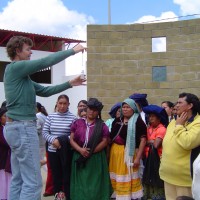
MEXICAN CERVICAL CANCER SCREENING STUDY
Our work in Mexico initially involved the “The Mexican cervical cancer screening study” (MECCS I) which took place between September 2002 and October 2004 in the State of Michoácan. Primary screening was by self-sampling for high-risk human papillomavirus (HR-HPV). 8,621 women (ages 30-50) were screened and 14.3% were positive for HR-HPV. Secondary screen was unaided visual inspection (VIA). The objectives of this study were to estimate the percent reduction in colposcopy rate, and determine the risk of invasive cancer in women who were self-sampling positive for high-risk HPV and VIA negative therefore potential candidates for ablation of the transformation zone without biopsy confirmation. As a corollary, this protocol estimated the risk of over-treatment with cryotherapy (one or two HPV positive test results with negative cervical histology), or under-treatment (large pre-cancerous lesions or cancer treated with cryotherapy) in the study population. All patients who were colposcoped were evaluated by our standard biopsy protocol. In this trial, the referral to colposcopy rate with colposcopy based on a VIA secondary triage plan for lesions diagnosed as unsuitable for cryotherapy (4 true positives and 5 false positives) was 9/1229 (0.73%). It was noted that if one time HR-HPV positive/ VIA positive, and dual HR-HPV positivity are the criteria for cryotherapy, there would be 129 women who had normal biopsies and 67 women with CIN I who would be treated 196/295 (66.4%). If cryotherapy was used to ablate the transformation zone in women who were one time HR-HPV positive and VIA positive or twice self-test HR-HPV positive 3.4% (11/326) with undetected large CIN II-III, endocervical disease, adenocarcinoma-in-situ, or invasive cancer would likely be inadequately treated. We concluded from MECCS that the study algorithm likely would decrease the rate of colposcopy from 14.3% to 0.73% due to lesion size, location or the presence of a cancer. Based on this pilot study completed in 2004, we were encouraged to try to find and evaluate a rapid more sensitive and more specific self-test.
